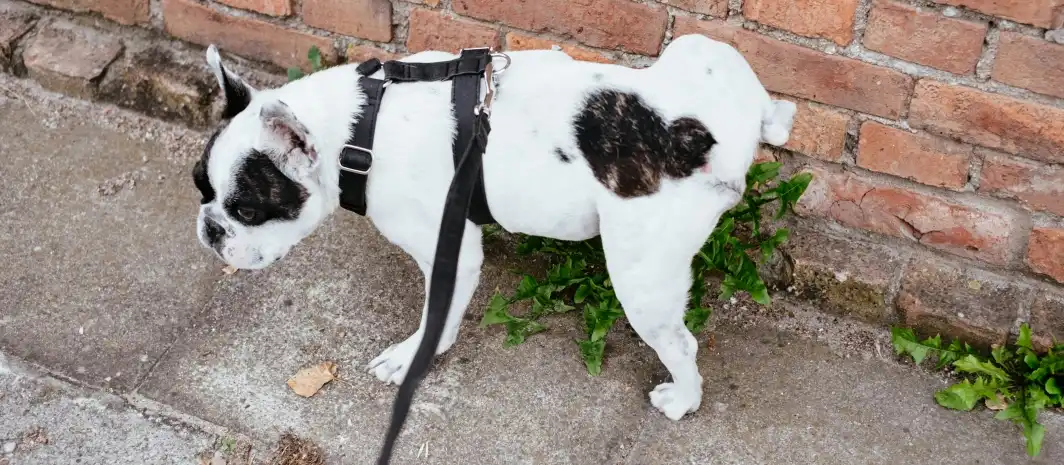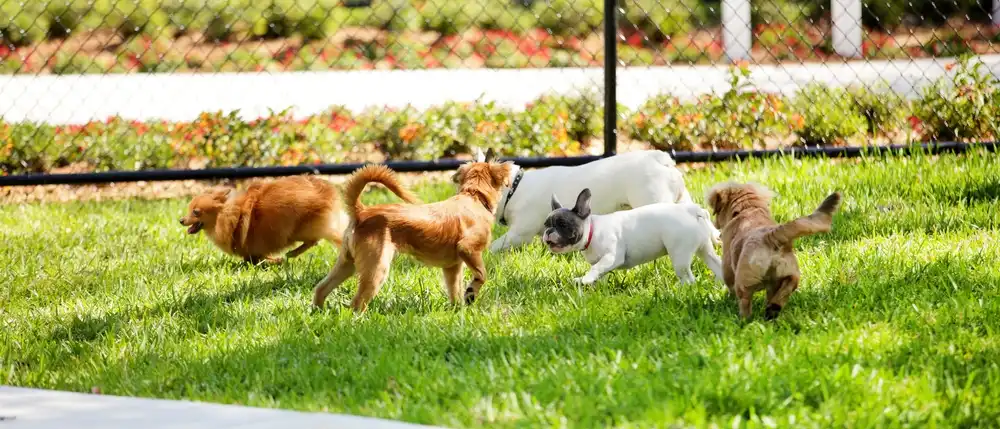How Dogs Mark Their Territory: What You Need to Know

Introduction
Have you ever noticed your furry friend sniffing around and then leaving a little mark in the corner of your living room or by the front door? Well, you're not alone! This behavior, known as territory marking, is quite common in dogs. But what exactly is it, and why do our canine companions do it? Territory marking is more than just a messy inconvenience; it's a complex form of communication in the dog world. In this post, we'll dive into the reasons behind this behavior and explore some practical ways to manage it.
Here's an amusing tidbit: Did you know that dogs have a unique way of leaving "messages" for each other? When they mark their territory, it's like they're posting a sign that says "I was here" or "This place is mine!" Imagine if humans had a similar system—our neighborhoods would certainly look quite different! But for dogs, these scent posts are a crucial part of their social interaction and territorial claims. Let's embark on this journey to understand our four-legged friends better and learn how to live harmoniously with their quirky habits.
Understanding Territory Marking in Dogs
Territory marking is a behavior dogs use to identify their domain, essentially claiming their space. It involves depositing a small amount of urine in specific spots. This might seem a little odd or even bothersome to us, but for dogs, it's a natural and essential form of communication. Let's delve into the reasons behind this behavior:
Instinctual Behavior:
- At its core, territory marking is driven by instinct. It's a behavior that's deeply ingrained in a dog's DNA, passed down from their ancestors who lived in the wild. In the animal kingdom, marking territory is crucial for survival, as it can ward off potential threats and ensure a secure space for the pack.
Communication with Other Dogs:
- Dogs have an incredible sense of smell, and each mark contains a wealth of information. When a dog leaves its scent, it's like writing a detailed message to other dogs. This message might include details about their identity, gender, and even their emotional state. It's a dog's way of saying, "I'm here, and this is my space," or "I've been here, and I might come back."
Marking Boundaries:
- Just as humans use fences and signs to define property lines, dogs use scent marking to outline their territory. This doesn't necessarily mean they're being aggressive or domineering. In many cases, it's simply a way to avoid conflict by making their presence known. By marking the boundaries of their territory, dogs can peacefully coexist with their neighbors, both human and canine, by establishing clear limits and expectations.
Understanding these reasons can help pet owners see territory marking not as a problematic behavior but as a natural, instinctive act that plays a significant role in a dog's life and communication.
Factors That Influence Territory Marking
Territory marking is not just a random act; it's influenced by several factors that can vary from one dog to another. Understanding these can help pet owners better manage and even predict this behavior. Here are some key factors:
Age and Gender of the Dog:
- Generally, territory marking becomes more pronounced as dogs reach social maturity, which can vary depending on the breed and individual dog. While both male and female dogs mark their territory, males are often more prolific markers. Females might mark more frequently when they're in heat, using their scent to communicate their mating status.
The Role of Unneutered Males:
- Hormones play a significant role in territory marking, especially in males. Unneutered males have higher levels of testosterone, which can intensify their urge to mark. This is part of their instinct to advertise their presence to females and assert dominance or presence to other males. Neutering can often reduce marking behaviors, especially if done before the dog reaches sexual maturity.
Environmental Triggers:
- Changes in a dog's environment can also prompt territory marking. For instance, moving to a new home, rearranging furniture, or even the presence of a new pet or family member can trigger a dog to mark. It's their way of establishing a sense of security and familiarity in the new setting. Dogs might also mark more in areas where the scents of other dogs are present, responding to the perceived "messages" left by others.
By considering these factors, pet owners can gain insights into their dog's marking behavior and take steps to manage it effectively, ensuring harmony in the home and a happy, stress-free environment for their furry friend.
Managing and Reducing Territory Marking
Dealing with territory marking can be challenging, but with patience and the right strategies, you can manage and even reduce this behavior in your home. Here are some effective ways to handle territory marking:
Training Tips to Discourage Marking Inside the House:
- Consistency is key when training your dog. If you catch your dog in the act of marking, a firm "no" can let them know this behavior is unacceptable inside. Immediately take them to an appropriate spot where they can relieve themselves. Praise and treats can reinforce good behavior when they mark in the right place. Regular walks and a consistent bathroom schedule also help prevent indoor accidents.
Indoor Lawn Squares for Bathroom Use:
- For pet owners living in apartments or without easy outdoor access, indoor lawn squares can be a lifesaver. These patches of real grass made by Doggie Lawn mimic the outdoors and give your dog a designated spot to relieve themselves. Training your dog to use these squares can provide a clear boundary, reducing the likelihood of marking in other indoor areas.
Importance of Spaying/Neutering:
- Spaying or neutering your pet can significantly decrease territory marking behaviors, especially if done before the dog reaches sexual maturity. These procedures reduce the hormonal drive behind marking and can lead to a calmer, more content pet overall.
Ways to Reduce Stress and Anxiety in Dogs:
- Sometimes, marking can be a response to stress or anxiety. Maintaining a stable routine, providing plenty of exercises, and ensuring your dog has a quiet, comfortable space can help. Toys and puzzles that stimulate their mind can also keep them engaged and relaxed. If your dog seems unusually stressed or anxious, consulting a veterinarian or a professional dog behaviorist might be necessary to address underlying issues.
By understanding and addressing the factors that contribute to territory marking, you can create a more peaceful and happy environment for both you and your furry friend. Remember, every dog is unique, so finding the right combination of techniques and patience is key to successfully managing territory marking behavior.
Tips for Cleaning and Eliminating Odors
Effective cleaning is crucial not just for keeping your home fresh, but also for discouraging your dog from remarking the same spots. Here are some tips to properly clean and eliminate odors from territory marking:
Best Cleaning Methods for Marking Spots:
- Act quickly: The sooner you clean the marked spot, the easier it will be to remove the odor and stain.
- Use the right cleaners: Avoid ammonia-based cleaners as they can mimic the smell of urine and may encourage your dog to mark the spot again. Instead, opt for enzymatic cleaners specifically designed for pet odors. These break down the urine and neutralize the smell.
- Blot, don't rub: If the spot is still wet, blot it with paper towels or a clean cloth to soak up as much urine as possible. Rubbing can spread the
stain and odor.
- Rinse with water: After blotting, rinse the area with cool water and blot dry again.
Products Recommended for Removing Odors:
- Enzymatic cleaners: These are the gold standard for cleaning urine spots. They contain special enzymes that break down the urine components and neutralize the odor.
- UV flashlight: Sometimes finding the exact spot can be tricky, especially on carpets. A UV flashlight can highlight urine stains, so you know where to clean.
- Odor neutralizers: After cleaning, using an odor neutralizer can help remove any lingering smells. Be sure it's a pet-safe product.
Remember, patience and persistence are key. It may take multiple cleanings to fully remove the odor, especially in areas that have been marked repeatedly. By maintaining a clean and odor-free environment, you'll make your home more comfortable for both you and your pet and discourage future marking.
Conclusion
Territory marking is a natural, instinctive behavior for dogs, deeply rooted in their communication and social structure. While it can be challenging for pet owners to manage, understanding the reasons behind it and knowing how to effectively address the behavior can make a significant difference. Remember the key points:
- Territory marking is often influenced by factors such as age, gender, hormonal status, and environmental changes.
- Training, consistency, and appropriate indoor solutions like lawn squares can help manage and reduce marking behaviors.
- Spaying or neutering your dog can decrease the urge to mark, especially if done early.
- Cleaning marked areas promptly and properly with the right products is essential to prevent re-marking and eliminate odors.
Managing territory marking requires patience and consistency. Every dog is unique, and what works for one may not work for another. It's about understanding your dog's needs and providing them with a stable, supportive environment. With time, persistence, and the right approach, you can navigate this aspect of dog behavior successfully, ensuring a happy home for both you and your furry friend.
Recent Posts
-

OCD in Dogs and Cats: Causes and Genetic Involvement
-

Dog Breeds Predisposed to Noise Phobia
-

Unraveling the Correlation between Canine Genetics and Behavior